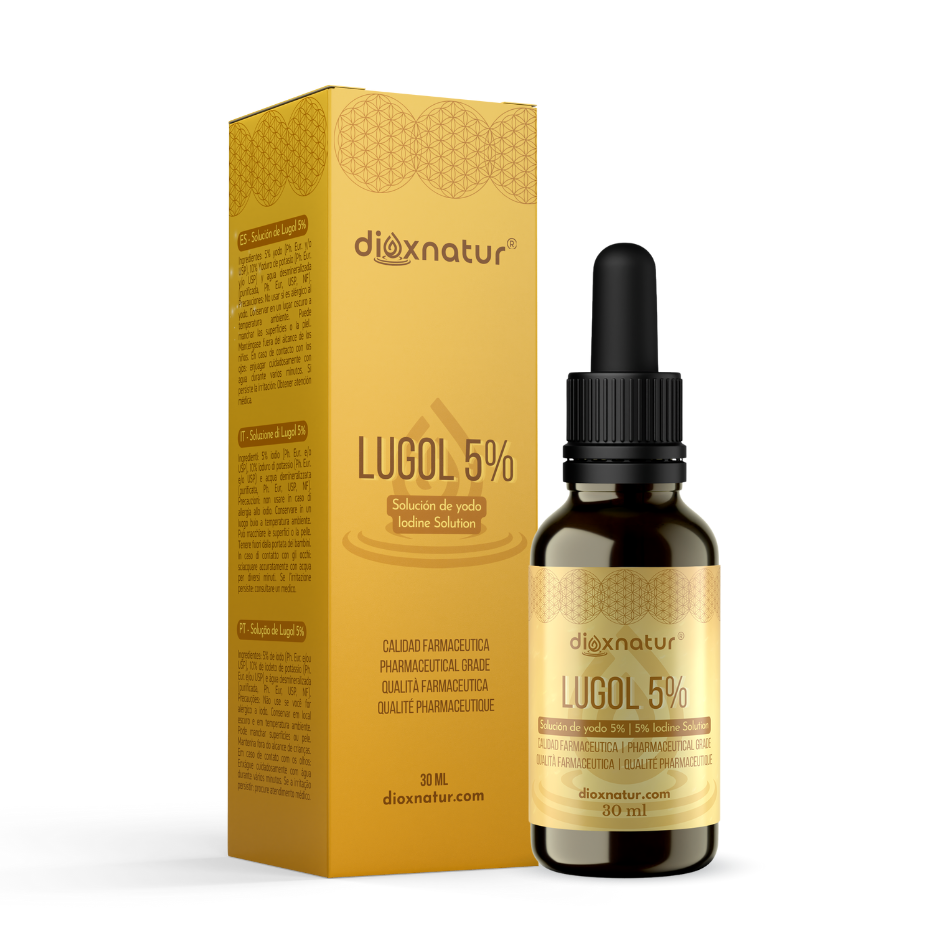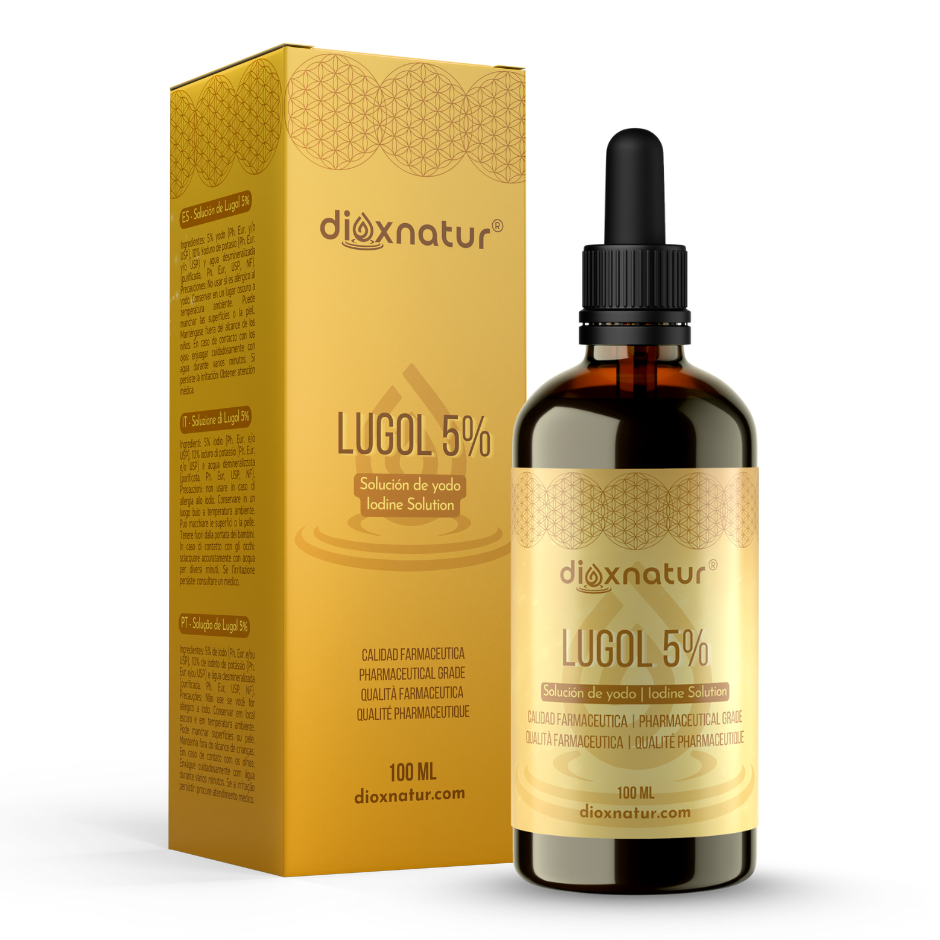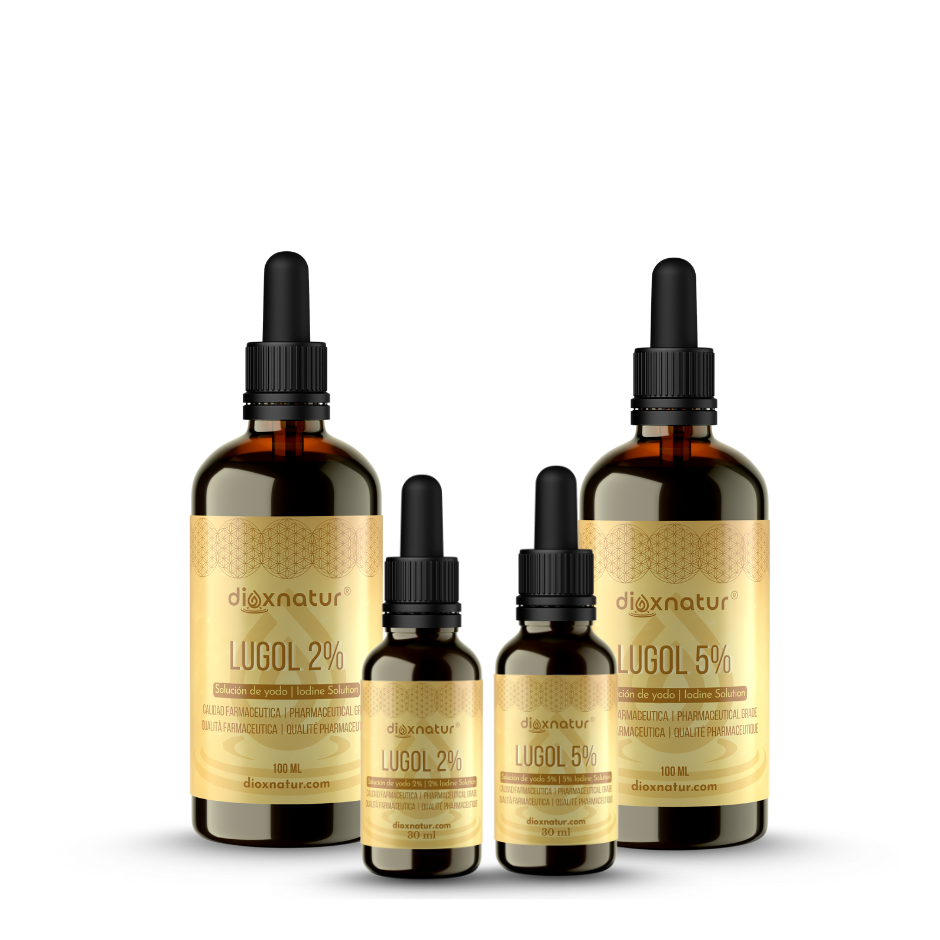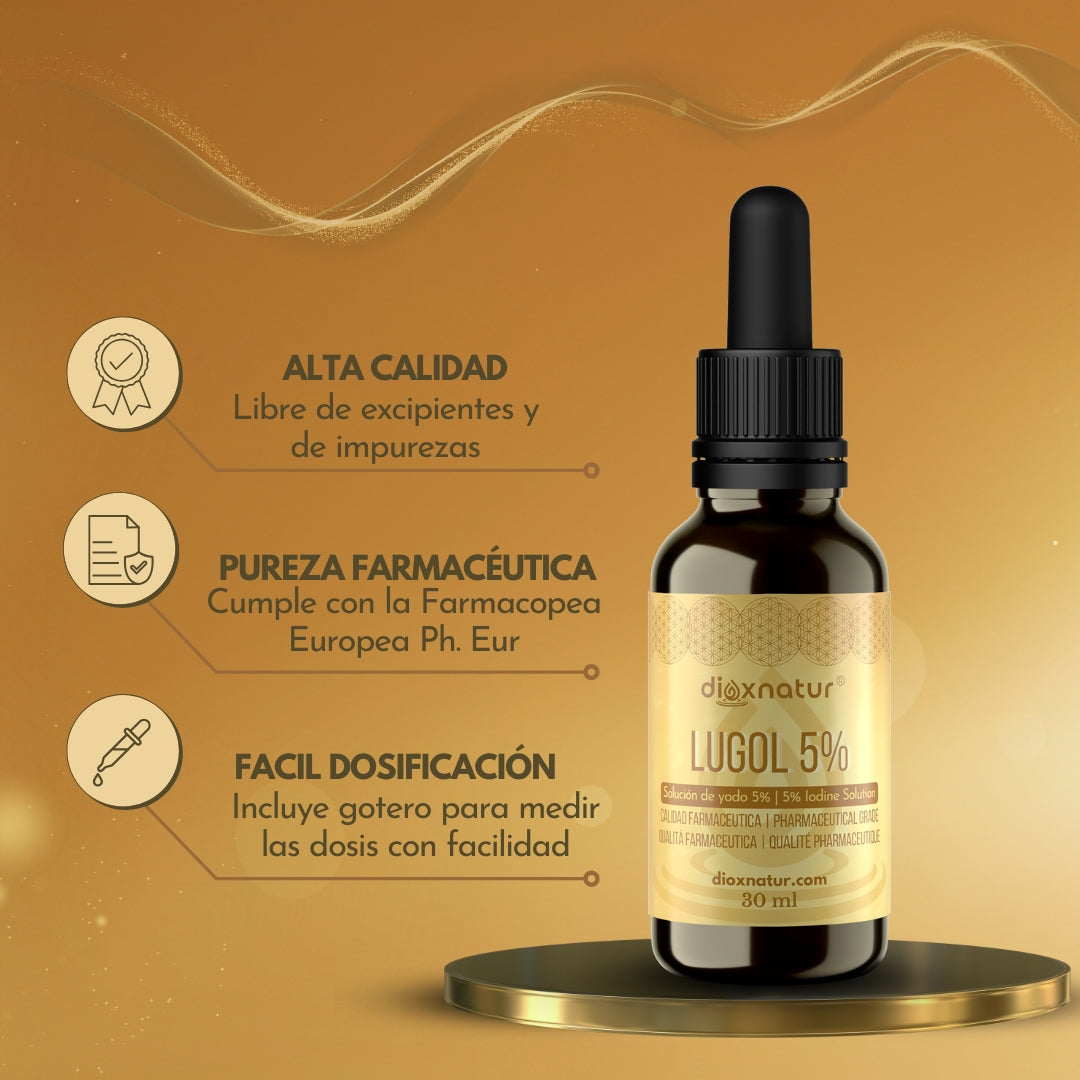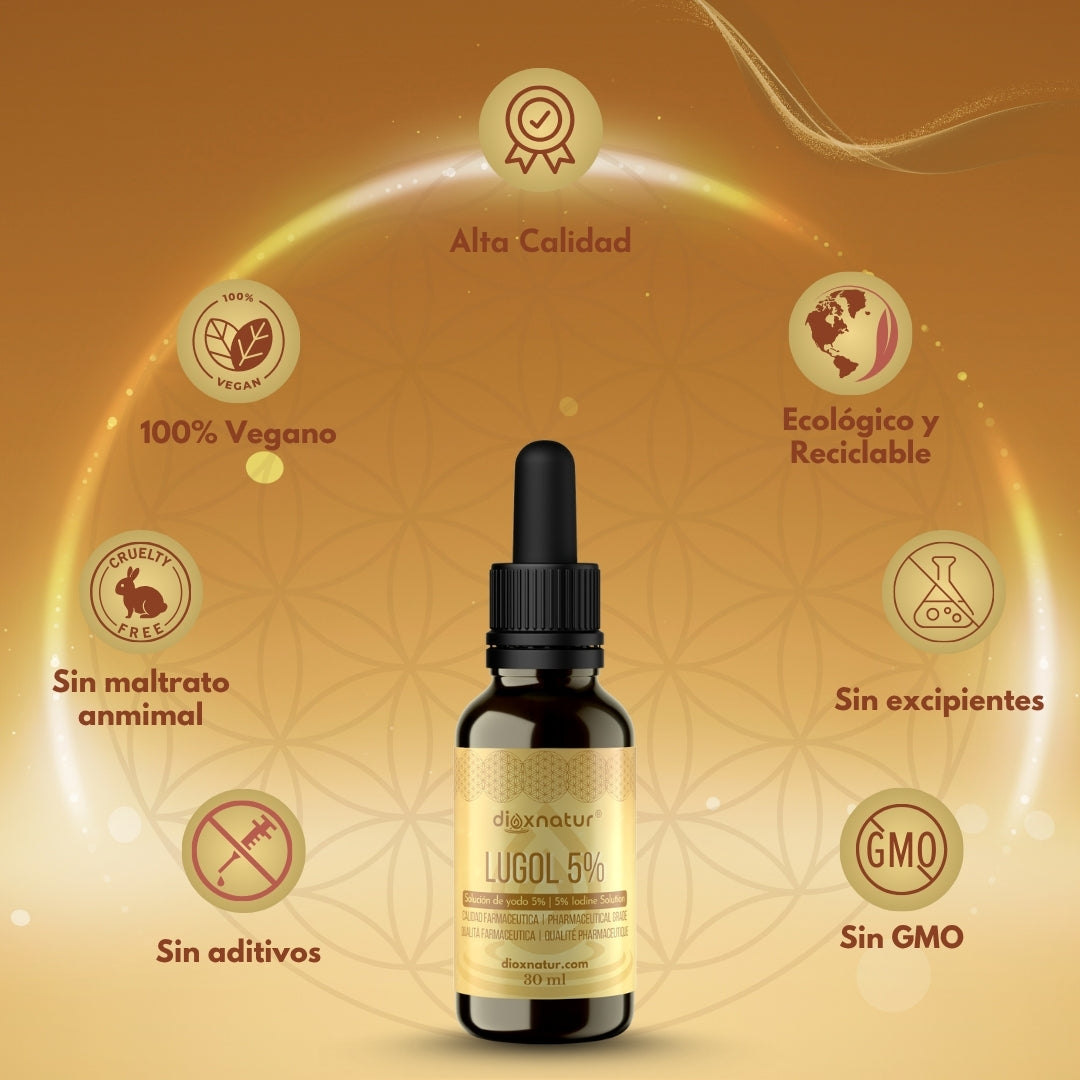Do you know what color Lugol's iodine is ? The formula l2 + Kl + H2O of Lugol's iodine creates a dark brown solution, characteristic of iodine. However, this color may vary depending on the type of test performed.
This test can be used to determine whether a sample contains starch, resulting in a change in the Lugol dye . This reaction may be dark blue, purple or black depending on the concentration level of the substance.
It should be noted that to check the test result, the solution is subjected to temperature changes. That is, if during the first test there was a reaction at room or cold temperature, the sample is heated.
This will cause the new color to turn brown or return to its natural state until the temperature decreases, giving rise to a new reaction to validate the result.

The colour of Lugol's solution can also change when the solution is used as an oxidant. If this test is performed on foods, it can be determined whether or not they are antioxidants. In case of a reaction, it will give a reddish colour that disappears after a few minutes.
So what happens when there is a chemical reaction in the Lugol test? This means that the result is Lugol Positive . For example, if the test is applied for medical purposes, it may determine that there are abnormal cells in the tissue.
They usually indicate the presence of cancer, infections, inflammation and health problems that can be diagnosed through other medical tests.
How to Understand a Negative Result with Lugol?
If the Lugol color change of a sample indicates a positive test result, what happens when there is no reaction? The reaction occurs through the inclusion of Lugol in the empty spaces of the polysaccharides, widely evident in starch.
This indicates that the molecule has been altered, modifying its properties. When this inclusion is not carried out, the result can be differentiated between positive and negative Lugol's . In this particular case, the final result is negative. No anomalies have been detected and there are no traces of starch in the sample.

For example, in a sample of hydrolyzed starch to which Lugol's dye is added, a red color is obtained indicating glucose, giving a positive result to the reagent. In the case of a sample of unhydrolyzed starch, it acquires a blue color with no obvious alteration when the temperature changes.
This result is negative and it can be determined that the second sample does not have starch in its molecular structure.
The same occurs when using Lugol's dye as a reagent in gynecological tests, where a change in its color may occur. In this case, the color of the tissue varies from white to yellow for a positive result.
However, when the Lugol covers the entire area without reaction, it indicates that the cells do not show any alteration. Otherwise, the Lugol color will be mahogany or brown to indicate that the result is negative for cancer or other gynecological pathology.









